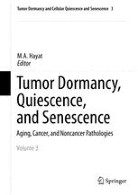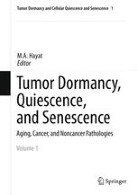
About this book series
Most of us have cancer tumors, but by no means all of them will develop into cancer. Uncertainty remains about the factors that regulate entry of residual cancer into a dormant state, as well as the re-initiation of its growth. In this major new series from Springer, some of the finest researchers in this urgent field trace the promising developments in the study of tumor dormancy—advances that could unlock our understanding of the dormant tumor’s reanimation. They show how, for example, an angiogenic ‘switch’ triggers metastases and thus morbidity, which indicates that preventing this activation may prove a more effective therapy than trying to reverse the runaway train of a tumor’s recidivist growth.
Even as research is hampered by a paucity of experimental models and a lack of consistent sources of dormant cells, the series illuminates the genetic and epigenetic factors responsible for dormancy and expansion. It is certain to inspire fresh thinking and research in our quest for therapeutic influence on cancer development. The five volumes examine in detail a wealth of aspects of tumor dormancy, from the molecular mechanisms associated with it, to its manifestation in angiogenic and non-angiogenic tumors. Covering virtually all aspects of cellular quiescence, including that of hematopoietic stem cells, the books represent the sum of current knowledge on the topic and explores the potential of techniques such as the removal of senescence cells that disrupt tissue structure and replicate irreparable double breaks in the DNA helix.
This abundant store of data and technique reflects the detailed and painstaking research described in its many chapters. Taken together, the volumes cover a body of work with much promise for the future.
Discontinued series: although this series no longer publishes new content, the published titles listed here remain available.
- Series Editor
-
- M. A. Hayat
Book titles in this series
-

-
Tumor Dormancy, Quiescence, and Senescence, Vol. 3
Aging, Cancer, and Noncancer Pathologies
- Editors:
-
- M.A. Hayat
- Copyright: 2014
Available Renditions
- Hard cover
- Soft cover
- eBook

-
Tumor Dormancy, Quiescence, and Senescence, Volume 1
Aging, Cancer, and Noncancer Pathologies
- Editors:
-
- M.A. Hayat
- Copyright: 2013
Available Renditions
- Hard cover
- Soft cover
- eBook

